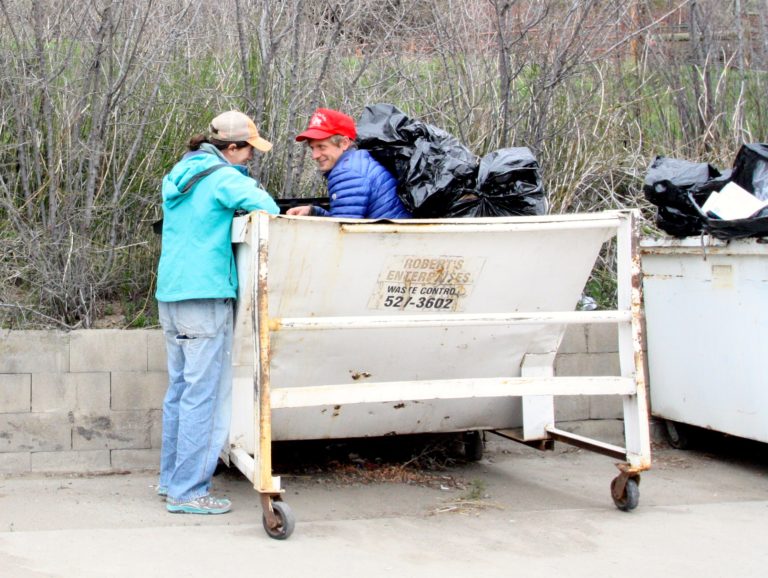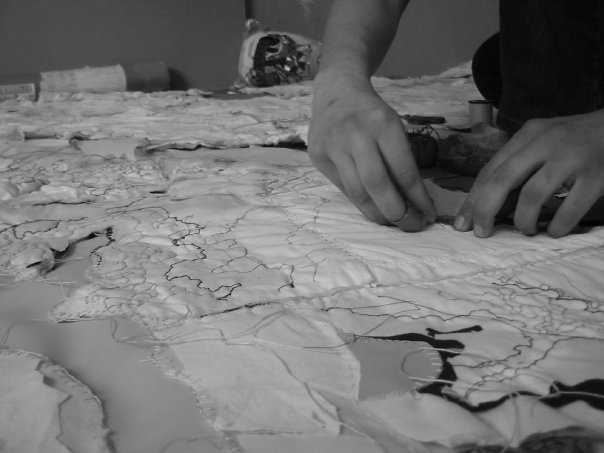
When I lived in a small town in Colorado, I knew a woman who most people would describe as a hoarder. She made her home in a log cabin not far from a winding river, under ragged cottonwood trees that shed downy tufts in early summer, and showers of gold each autumn. You could see all the this-and-thats stacked high against the windows where the curtains didn’t cover, all the way up to a shipstyle porthole on the second floor. The overall impression was that the cabin sloshed nearly to its brims with things.
Her airstream out front was full of dressers and armoires. Her backyard was like a sculpture garden for the partially broken mundane. A trampoline. Odds and ends of lumber. Stacks of salvaged tile. She told me once that she was storing six clawfoot bathtubs. Sometimes, she’d find a dress or a pair of pants she thought would strike my fancy, load it into a salvaged plastic grocery bag, and hang it from my gate latch for me to find when I came home from work.
The objects she kept were beautiful, not junk, except insofar as there were far, far more of them than she’d ever be able to use. But given the stigma attached to hoarding, she was always self-conscious about her collection. Rarely did she allow anyone else inside her house, including the tenants who rented the small studio apartment she had built in a shed out back.
Her impulse to gather stuff was something I understood. My parents are the sort of people who keep things until they are completely worn out. There is still a beige, orange and brown carpet in their house from 1968. They drive the same Ford Explorer they bought used in 1990. Some of my childhood friends’ parents took this frugality to even greater heights, introducing us to Dumpster diving in middle school. It was both amazing and shocking the things we would find, that others had tossed out. Working stereos. Leather jackets. Perfectly good sneakers. Piles and piles and piles of compact disks, and all their flimsy “jewel” cases. Artifacts now as exotic maybe as arrowheads, but lacking the beauty of something made by hand and cared for as if it carried the same worth as the labor from which it was made, for a purpose with real stakes: Food, and by extension, staying alive.
Somewhere amidst sifting through other peoples’ discards, I started to hate throwing things away. I could see history in my belongings. The pants I wore when a friend and I picked up a couch off a curb one night and drove around with it until we decided to unload it in the middle of a baseball diamond. The stained copy of Barry Lopez’s Arctic Dreams that I read when I first discovered a path towards becoming a writer. It wasn’t just that these things were physical extensions of memory. They were also made of materials that were themselves more valuable than the objects they had become. Sunlight. Plants. Trees. Soil that had once hosted a self-sustaining world. They had, in other words, a deep cost far beyond their pricetag, and beyond their value in my own life.
Each thing, I came to feel, had to justify the sacrifice that made it. I was an art major, so this was sort of a crippling place to end up. I would look at my oil paints and see heavy metal mines. I would look at my canvases and see cotton farms sucking up water in Arizona desert. I would think, There are already so many paintings. I started drawing by sewing instead, using bedsheets I picked up at thriftstores, thread left over from mending projects, making objects that could be both artful and utilitarian. Eventually, weighed down by all the things that I had made that I now felt responsible for, I turned almost all my creative energy to writing. This, at least, made compact things, I reasoned, though I was fully aware of the logical fallacy there. The Internet servers humming with energy. The magazines and newspapers that become garbage so soon after being read.

When I moved to Oregon, I did not take much with me. Still, I had a lot that I didn’t expressly need packed into my Subaru and a six by eight foot trailer. I could have purchased a new mattress. I could have gotten a different shelf and a new desk. Was I really going to read all of those books again?
But what would happen to these things if I put them aside? In the process of packing up my stuff, my hoarding friend’s logic had come to seem a very sane response to a society where everything has become so disposable. When people critique capitalism, they will often say: We care too much about acquiring stuff—nicer cars, bigger TVs, bigger houses. I think that’s off base. The problem is not that we care TOO much about stuff. It’s that we do not place enough value on the stuff we already have.
Photo of the ne’er-do-well Dumpster divers of Paonia, Colorado by the author. Photo of author making topographical map quilt by Riley Nagler. This post originally appeared April 3, 2018.